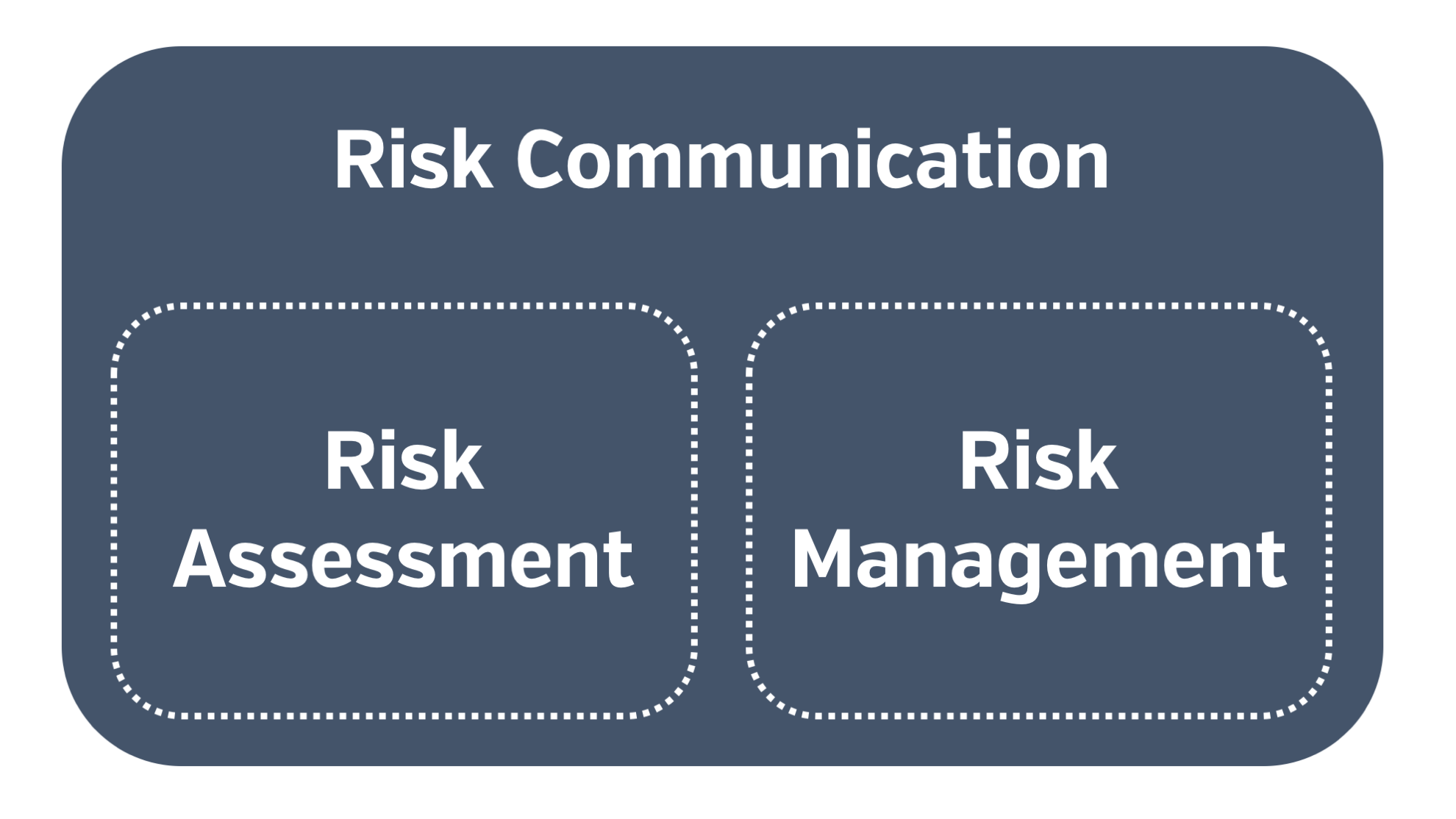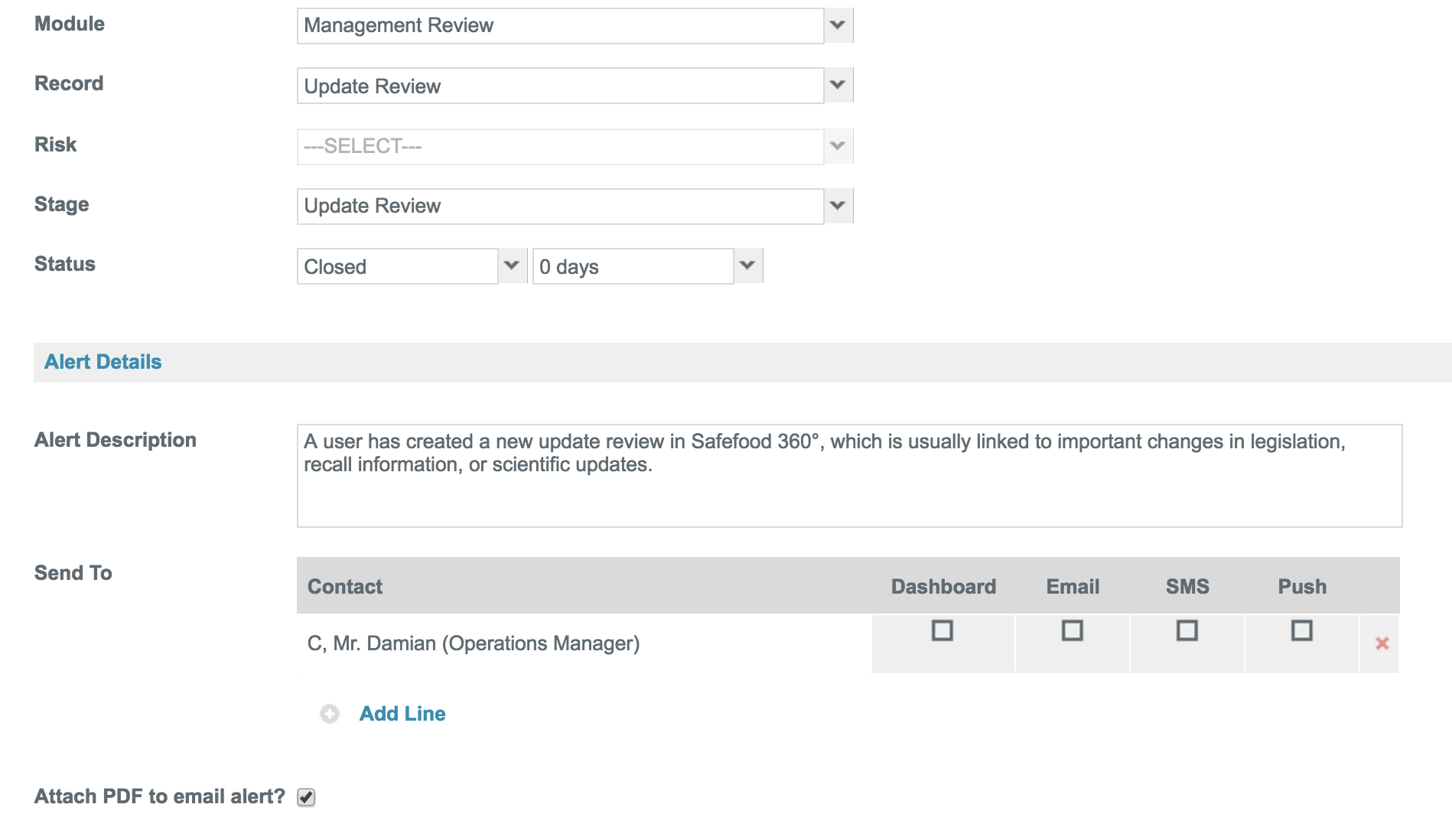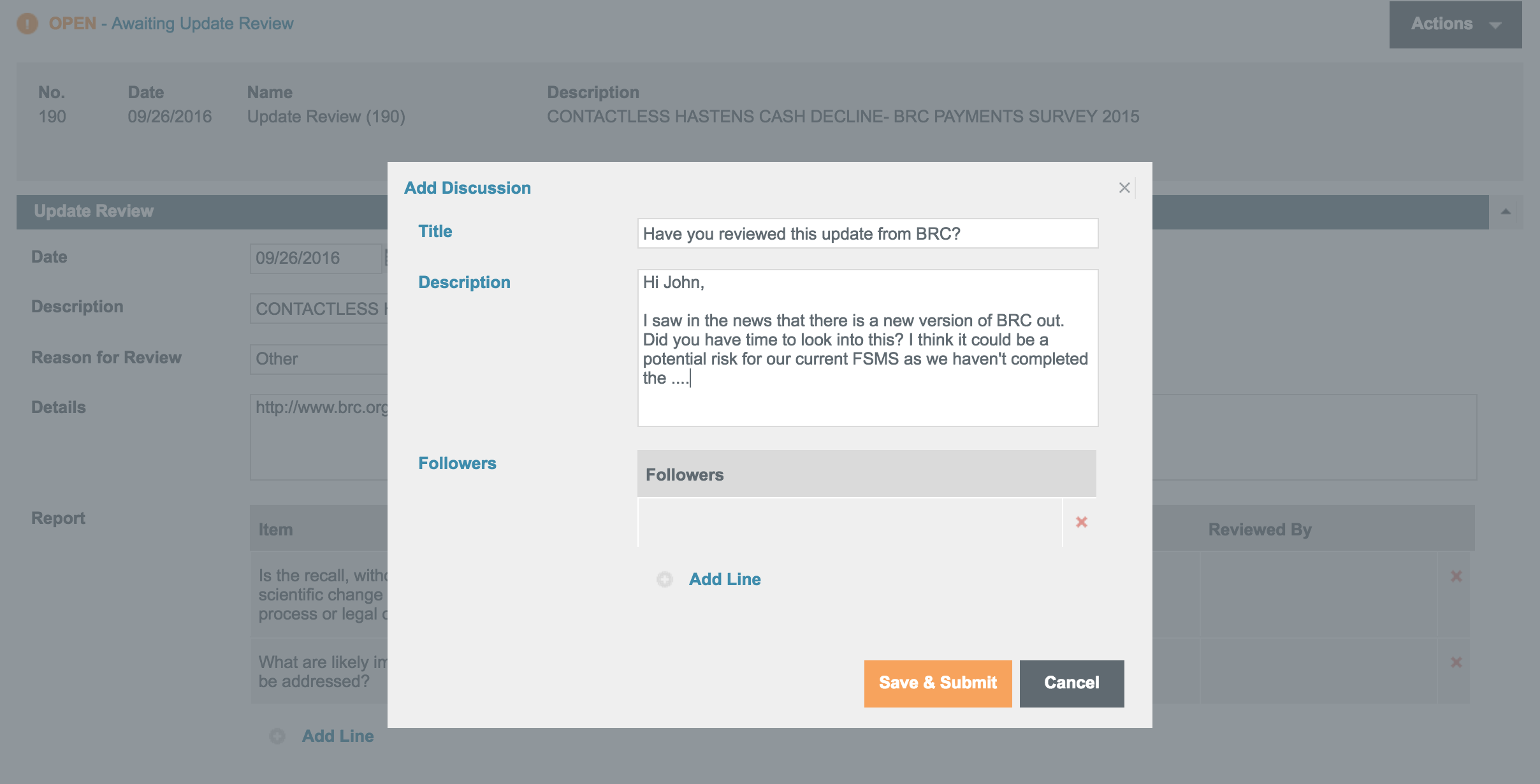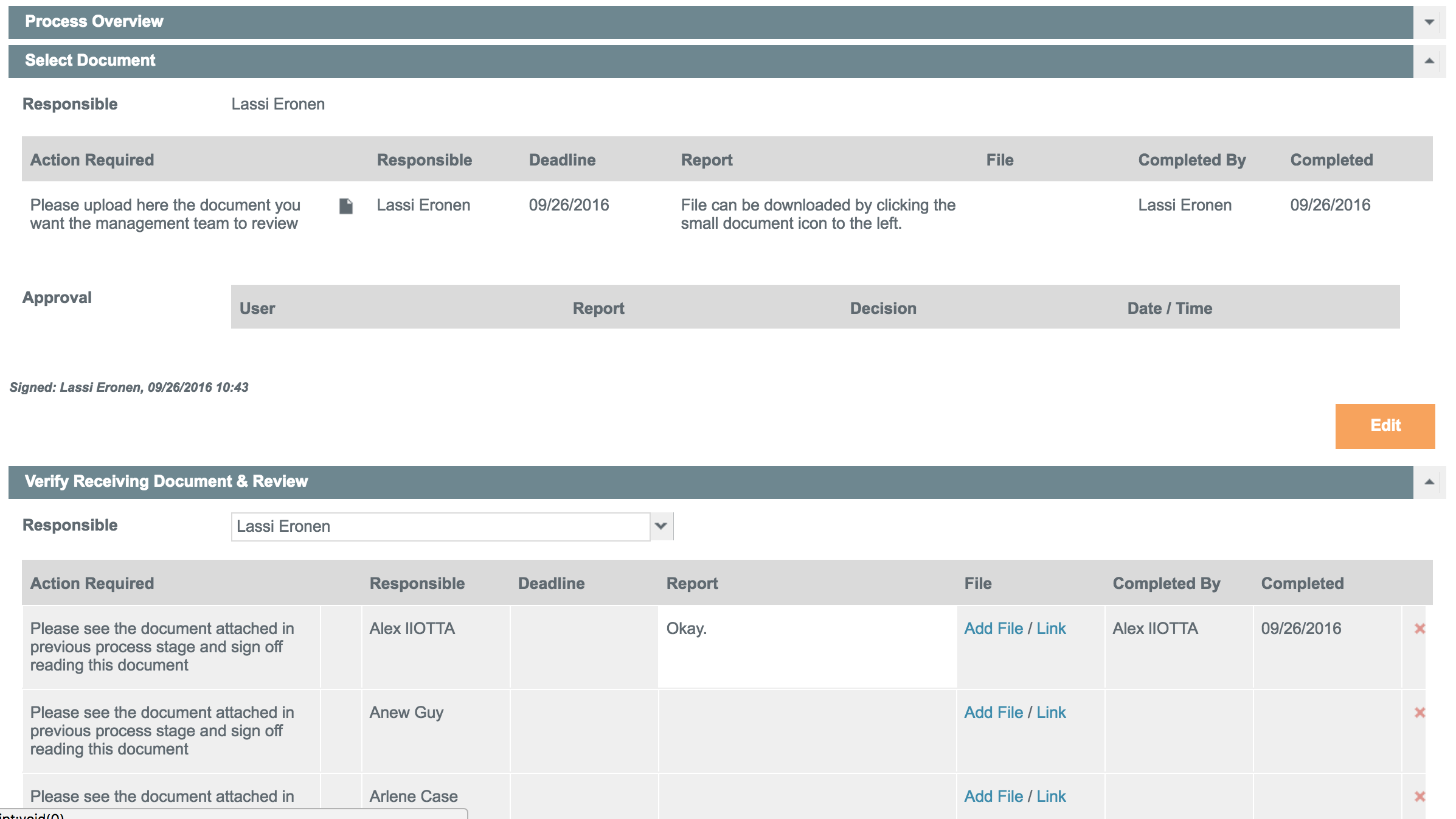4 tactics for more effective risk communication
When I consult companies who are interested in the Food Safety Planning module (formerly known as HACCP), the most common question they have is, ‘Can your software help us make better risk assessments?’ The simple answer to this is yes, but let’s talk about something different for a change.
There is one completely overlooked element in risk management that is just as important as risk assessing: Risk communication.

Indeed, the three elements of a food safety risk management framework are:
- Risk Assessment: Have all the risks been uncovered and evaluated appropriately?
- Risk Management: Have the necessary policies been created and enforced to mitigate these risks?
- Risk Communication: Have relevant stakeholders been made aware of what to do, and are up-to-date on the latest risks?
In the framework of risk management, each of these tenets cannot exist without the other.
What is risk communication?
The Codex Alimentarius definition of risk communication is “The interactive exchange of information and opinions throughout the risk analysis process concerning risk, risk-related factors and risk perceptions, among risk assessors, risk managers, consumers, industry, the academic community and other interested parties, including the explanation of risk assessment findings and the basis of risk management decisions.”
That’s a lot of text, so it’s no wonder if you lost your will to engage in risk communication after reading the above.
But, let’s try to frame this more positively.
It is clear that it doesn’t make sense to invest a lot of time into understanding and mapping risks if the results of this work will be buried in spreadsheets and documents that apparently no-one reads or acts upon.
The goal of risk communication is to drive action
Risk communication does not just mean sharing information. The FAO writes that the major function of risk communication “should be to ensure that all information and opinion required for effective risk management is incorporated into the decision-making process.”
Risk communication cannot be successful unless it turns into action which is listened to by those in positions of influence.
As with any form of communication, risk communication cannot be considered successful or relevant unless it turns into action and is genuinely listened to by those in positions of influence.
If risk assessment is the fuel, and risk management is the match, then risk communication is the oxygen without which no fire will ignite.
The problem with risk communication is that it’s not exciting.
Coming up with new risk scenarios and developing policies is creative and feels strategic, while many find the process of how these findings are communicated to be boring and mundane.
But if risk assessment is the fuel, and risk management is the match, then risk communication is the oxygen without which no fire will ignite.
Four tactics that will improve your risk communication today
In this blog, I will share some ideas about how you can improve your risk communication in different ways and achieve:
- Automated sharing of key information
- Seamless sourcing of comments and ideas
- Certainty that all stakeholders have received and reviewed key information
- The transformation of risk management and risk communication from a one-time exercise into a continuous process
One: Set up alerts for key events
Such key events include:
• New hazard analyses
• New hazards in the database
• New HACCP reviews
• New update reviews
I would set up automatic distribution for all of the above cases.
Alerts are effective for disseminating information, but they do not accomplish the goal of turning information into action. This means that alerts should only be one part of the risk communication toolkit.
Below is a simple example of setting up an automatic notification that will send a PDF copy of new Update Reviews in the system. Why is this useful? Usually, when someone reviews an update, there is a good reason for it: It is connected to a recall, regulatory change, or perhaps even a scientific update ̶ all things that management should be aware of.

Two: Use Discussions for capturing feedback
The fastest way to reach people, regarding new risk assessments or other relevant content, is by using the built-in Discussions module which allows group email threads to be started from any record within the system.
Safefood 360° will keep the followers up-to-date on new entries as the conversation proceeds, and it will store the email conversation in line with the source record.
In the example below, the Discussions feature is used to ask colleagues for further information about a legal change that was featured in the news.

Three: Ensure people receive and review information by using the Business Process module
One creative use for the Business Process module is to set it up for capturing e-signatures after people have reviewed important content.
It only takes a couple of minutes to set up a basic process in the module, and it can be re-used for any procedure, plan, risk assessment, or management review that you would like to share.
The pictures below show how a two-stage process in the module has been set-up:
- First stage: The person responsible for risk communication is attaching a document to the process.
- Second stage: Key people in the company receive an automatic notification from the module to review the document and close the action. There will be an electronic signature captured in the Audit Log showing when the user actually completed the action.

Four: Start an annual risk management meeting
If management is reluctant to start such a meeting, it’s a bad sign and means they don’t really take risk management seriously.
Regular meetings might feel unnecessary at first, but are needed as no organization has the capacity to map out and manage all possible risks as part of a project.
Risk management needs to be an ongoing process where new risks are regularly imagined.
Risk management needs to be an ongoing process where new risks are regularly imagined.
For instance, think about Horsegate. Many companies could not even imagine the possibility of someone manipulating the entire supply chain, from traders to vets and logistics companies, in order to sell horse meat. And yet, they did!
This highlights that no matter how thorough the planning, or how outlandish or improbable an event may seem, you should never be complacent. New risks emerge all the time.
For recording these meetings, you could use the Management Review module and have an agenda set up for a recurring management review program.
How do you manage risk communication?
I hope these tactics have been useful. By using the Safefood 360° system more creatively, you can automate and improve many of the parts of risk communication that usually feel difficult and valueless.
How do you manage risk communication in practice? What type of challenges have you had and how did you overcome those challenges?




